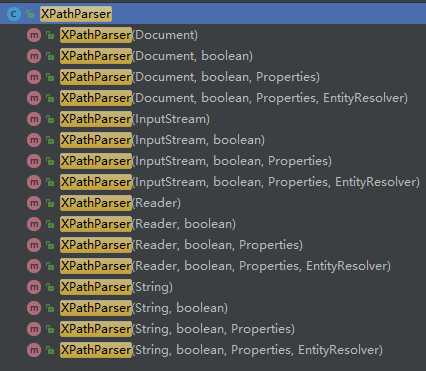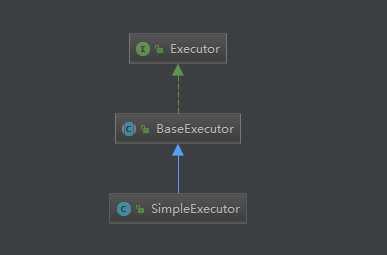标签:大量 tps te pro NPU 属性 rop nsa except variable

MyBatis 作为目前最常用的持久层框架之一,分析其源码,对我们的使用过程中可更好的运用它。本系列基于mybatis-3.4.6进行分析。
MyBatis 的初始化工作就是解析主配置文件,映射配置文件以及注解信息。然后保存在org.apache.ibatis.session.Configuration,供后期执行数据请求的相关调用。
Configuration 里有大量配置信息,在后面每涉及到一个相关配置,会进行详细的分析。
public static void main(String[] args) throws IOException {
// 获取配置文件
Reader reader = Resources.getResourceAsReader("mybatis-config.xml");
// 通过 SqlSessionFactoryBuilder 构建 sqlSession 工厂
SqlSessionFactory sqlSessionFactory = new SqlSessionFactoryBuilder().build(reader);
// 获取 sqlSession 实例
SqlSession sqlSession = sqlSessionFactory.openSession();
reader.close();
sqlSession.close();
}SqlSessionFactoryBuilder 的build()是Mybatis启动的初始化入口,使用builder模式加载配置文件。
通过查看该类,使用方法重载,有以下9个方法:

方法重载最终实现处理的方法源码如下:
public SqlSessionFactory build(Reader reader, String environment, Properties properties) {
try {
// 实例化 XMLConfigBuilder,用于读取配置文件信息
XMLConfigBuilder parser = new XMLConfigBuilder(reader, environment, properties);
// 解析配置信息,保存到 Configuration
return build(parser.parse());
} catch (Exception e) {
throw ExceptionFactory.wrapException("Error building SqlSession.", e);
} finally {
ErrorContext.instance().reset();
try {
reader.close();
} catch (IOException e) {
// Intentionally ignore. Prefer previous error.
}
}
} public SqlSessionFactory build(InputStream inputStream, String environment, Properties properties) {
try {
XMLConfigBuilder parser = new XMLConfigBuilder(inputStream, environment, properties);
return build(parser.parse());
} catch (Exception e) {
throw ExceptionFactory.wrapException("Error building SqlSession.", e);
} finally {
ErrorContext.instance().reset();
try {
inputStream.close();
} catch (IOException e) {
// Intentionally ignore. Prefer previous error.
}
}
}通过 SqlSessionFactoryBuilder 中 XMLConfigBuilder parser = new XMLConfigBuilder(reader, environment, properties), 分析 XMLConfigBuilder实例化过程。
该类中有四个变量:
private boolean parsed;
private final XPathParser parser;
private String environment;
private final ReflectorFactory localReflectorFactory = new DefaultReflectorFactory();true为已解析过。SqlSessionFactoryBuilder 中的 environmentReflector对象,一个类对应一个Reflector。因为参数处理、结果映射等操作时,会涉及大量的反射操作。DefaultReflectorFactory实现类比较简单,这里不再进行讲解。XMLConfigBuilder构建函数实现:
public XMLConfigBuilder(Reader reader, String environment, Properties props) {
this(new XPathParser(reader, true, props, new XMLMapperEntityResolver()), environment, props);
}XPathParser 对象首先实例化 XPathParser 对象,里面定义了5个变量:
private final Document document;
private boolean validation;
private EntityResolver entityResolver;
private Properties variables;
private XPath xpath;XPathParser 对象构造函数有:

函数里面都处理了两件事:
public XPathParser(Reader reader, boolean validation, Properties variables, EntityResolver entityResolver) {
commonConstructor(validation, variables, entityResolver);
this.document = createDocument(new InputSource(reader));
}XPath对象,用于对XML文件节点的操作。 private void commonConstructor(boolean validation, Properties variables, EntityResolver entityResolver) {
this.validation = validation;
this.entityResolver = entityResolver;
this.variables = variables;
// 创建Xpath对象,用于对XML文件节点的操作
XPathFactory factory = XPathFactory.newInstance();
this.xpath = factory.newXPath();
}Document对象并赋值到document变量, 这里属于Document创建的操作,不再详细讲述,不懂可以点击这里查看API private Document createDocument(InputSource inputSource) {
// important: this must only be called AFTER common constructor
try {
// 实例化 DocumentBuilderFactory 对象,用于创建 DocumentBuilder 对象
DocumentBuilderFactory factory = DocumentBuilderFactory.newInstance();
// 是否校验文档
factory.setValidating(validation);
// 设置 DocumentBuilderFactory 的配置
factory.setNamespaceAware(false);
factory.setIgnoringComments(true);
factory.setIgnoringElementContentWhitespace(false);
factory.setCoalescing(false);
factory.setExpandEntityReferences(true);
// 创建 DocumentBuilder
DocumentBuilder builder = factory.newDocumentBuilder();
builder.setEntityResolver(entityResolver);
builder.setErrorHandler(new ErrorHandler() {
@Override
public void error(SAXParseException exception) throws SAXException {
throw exception;
}
@Override
public void fatalError(SAXParseException exception) throws SAXException {
throw exception;
}
@Override
public void warning(SAXParseException exception) throws SAXException {
}
});
// 加载文件
return builder.parse(inputSource);
} catch (Exception e) {
throw new BuilderException("Error creating document instance. Cause: " + e, e);
}
}XMLConfigBuilder构造函数赋值 private XMLConfigBuilder(XPathParser parser, String environment, Properties props) {
super(new Configuration());
ErrorContext.instance().resource("SQL Mapper Configuration");
this.configuration.setVariables(props);
this.parsed = false;
this.environment = environment;
this.parser = parser;
}BaseBuilder的值。XPathParser赋值给parser。最后返回XMLConfigBuilder对象。
通过 XMLConfigBuilder.parse() 解析配置信息,保存至Configuration。解析详解在后面文章中进行分析。
public Configuration parse() {
// 是否解析过配置文件
if (parsed) {
throw new BuilderException("Each XMLConfigBuilder can only be used once.");
}
// 标志解析过,定义为 true
parsed = true;
// 解析 configuration 节点中的信息
parseConfiguration(parser.evalNode("/configuration"));
return configuration;
}DefaultSqlSessionFactory实现了SqlSessionFactory接口。
通过上面解析得到的Configuration,调用SqlSessionFactoryBuilder.build(Configuration config)创建一个 DefaultSqlSessionFactory。
public SqlSessionFactory build(Configuration config) {
return new DefaultSqlSessionFactory(config);
}实例化DefaultSqlSessionFactory的过程,就是将Configuration传递给DefaultSqlSessionFactory成员变量configuration。
public DefaultSqlSessionFactory(Configuration configuration) {
this.configuration = configuration;
}通过调用SqlSessionFactory.openSession()创建SqlSession。
public interface SqlSessionFactory {
// 默认创建
SqlSession openSession();
SqlSession openSession(boolean autoCommit);
SqlSession openSession(Connection connection);
SqlSession openSession(TransactionIsolationLevel level);
SqlSession openSession(ExecutorType execType);
SqlSession openSession(ExecutorType execType, boolean autoCommit);
SqlSession openSession(ExecutorType execType, TransactionIsolationLevel level);
SqlSession openSession(ExecutorType execType, Connection connection);
Configuration getConfiguration();
}SIMPLE(不做特殊处理), REUSE(复用预处理语句), BATCH(会批量执行)因为上面DefaultSqlSessionFactory实现了SqlSessionFactory接口,所以进入到DefaultSqlSessionFactory查看openSession()。
public SqlSession openSession() {
return openSessionFromDataSource(configuration.getDefaultExecutorType(), null, false);
}openSession()方法最终实现代码如下:
private SqlSession openSessionFromDataSource(ExecutorType execType, TransactionIsolationLevel level, boolean autoCommit) {
Transaction tx = null;
try {
// 获取configuration中的加载环境
final Environment environment = configuration.getEnvironment();
// 获取事务工厂
final TransactionFactory transactionFactory = getTransactionFactoryFromEnvironment(environment);
// 创建一个事务
tx = transactionFactory.newTransaction(environment.getDataSource(), level, autoCommit);
// 生成一个处理器,事务保存在处理器 BaseExecutor 中
final Executor executor = configuration.newExecutor(tx, execType);
// 实例化一个 DefaultSqlSession,DefaultSqlSession实现了SqlSession接口
return new DefaultSqlSession(configuration, executor, autoCommit);
} catch (Exception e) {
// 异常情况下关闭事务
closeTransaction(tx); // may have fetched a connection so lets call close()
throw ExceptionFactory.wrapException("Error opening session. Cause: " + e, e);
} finally {
// 充值错误实例上下文
ErrorContext.instance().reset();
}
}生成处理器Configuration.newExecutor(Transaction transaction, ExecutorType executorType):
public Executor newExecutor(Transaction transaction, ExecutorType executorType) {
// 默认为 ExecutorType.SIMPLE
executorType = executorType == null ? defaultExecutorType : executorType;
executorType = executorType == null ? ExecutorType.SIMPLE : executorType;
Executor executor;
if (ExecutorType.BATCH == executorType) {
executor = new BatchExecutor(this, transaction);
} else if (ExecutorType.REUSE == executorType) {
executor = new ReuseExecutor(this, transaction);
} else {
executor = new SimpleExecutor(this, transaction);
}
if (cacheEnabled) {
executor = new CachingExecutor(executor);
}
executor = (Executor) interceptorChain.pluginAll(executor);
return executor;
}以ExecutorType.SIMPLE为例, BatchExecutor, ReuseExecutor同理:

至此,mybatis的启动流程大致简单的介绍到这里,对mybatis的启动初始化有个大致了解。接下将会针对单独模块进行详细分析。
个人博客: https://ytao.top
我的公众号 ytao

标签:大量 tps te pro NPU 属性 rop nsa except variable
原文地址:https://www.cnblogs.com/ytao-blog/p/11756456.html